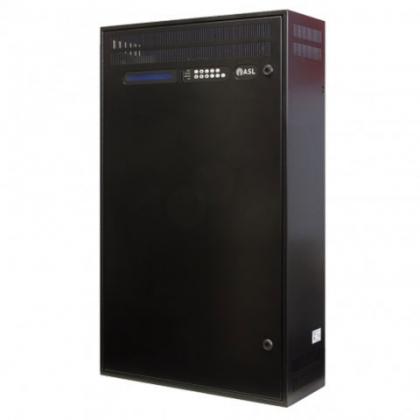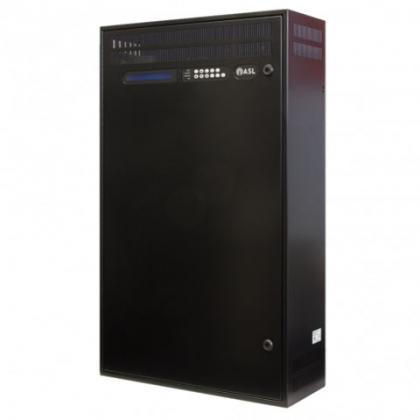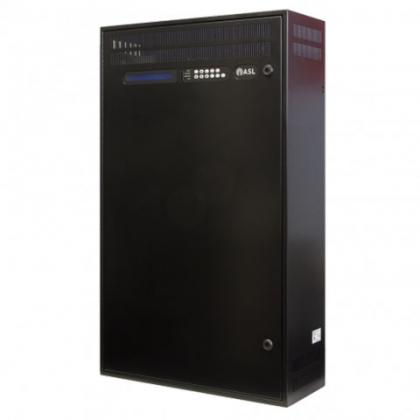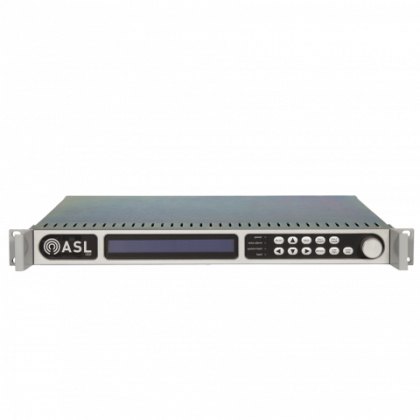Unified Communication Systems: The Future of Safety and Compliance
Discover how unified communication systems combine PA, VA, intercom, and mobile radio into one platform to enhance safety, ensure compliance, and streamline critical operations.
In today’s public arena, clear and reliable communication is more than just a convenience - it’s a lifeline. From busy rail terminals and airports to hospitals, schools and industrial sites, the ability to deliver the right message at the right time is critical for both everyday efficiency and life-saving emergency response.
As legislation such as the Terrorism (Protection of Premises) Act 2025 (Martyn’s Law) drives the need for more robust solutions, unified communication systems are emerging as the smart way forward. By integrating public address (PA), voice alarm (VA), intercom and mobile radio technologies into one connected platform; organisations can not only meet compliance requirements but also streamline operations, cut costs and future-proof their infrastructure.
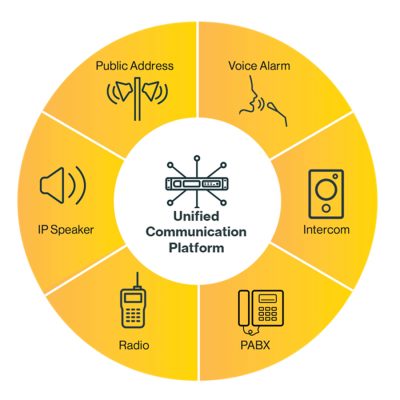 What is a Unified Communication System?
What is a Unified Communication System?
A Unified Communication System brings together multiple technologies - such as Public Address, Voice Alarm, intercom and mobile radio - into a single, integrated platform. Instead of running separate, siloed systems for different tasks, a unified solution ensures that all communication channels work together seamlessly. This means everyday announcements, security alerts and emergency evacuation messages can all be managed from one central system, improving efficiency, reducing costs and - most importantly - enabling faster, more coordinated responses when it matters most.
Why communication systems matter
Whether it’s coordinating staff, delivering travel announcements, or directing people to safety in an emergency, communication systems are the backbone of critical environments. They:
- Ensure clear, reliable messaging across different zones and user groups.
- Support day-to-day operations like paging, visitor management and staff coordination.
- Provide life-saving alerts during fire, chemical, or security incidents.
But the landscape is changing fast. Safety standards are tightening, insurance requirements are stricter, and the cost of system downtime has never been higher. Facilities now demand solutions that are resilient, auditable, and compliant - and that means moving beyond standalone technologies.
The Four Core Communication Technologies
Most facilities rely on a mix of four primary communication systems:
1. Intercom & Telephony
Direct, two-way communication for staff, security and access control. Perfect for control rooms, receptions, or nurse stations, intercoms integrate seamlessly with video surveillance and access control for a complete security solution.
2. Mobile Radio
Flexible, portable, and reliable even when public networks fail. Mobile radio systems are ideal for mission-critical environments such as first responders, security patrols, and maintenance crews - offering instant push-to-talk and emergency call features.
3. Public Address (PA)
Used daily in offices, shopping centres, schools and transport hubs to broadcast announcements, paging messages and background music. While perfect for general messaging, PA systems do not meet compliance requirements for emergency evacuation under Martyn’s Law.
4. Voice Alarm (VA)
Purpose-built for emergencies, VA systems deliver pre-recorded or live voice instructions during emergency incidents. Integrated with fire detection, they automatically trigger to guide people to safety and must meet strict standards such as BS 5839-8 and EN-54 certification.
Public Address (PA) – What is a Public Address System?
A Public Address system is designed to distribute sound clearly across different areas of a building or facility. Typically made up of microphones, amplifiers and loudspeakers, PA systems are used for general announcements, paging and background music.
You’ll find them in schools, shopping centres, stadiums, and transportation hubs - anywhere that requires clear, wide-reaching communication. For example, a shopping centre might use a PA system to announce store promotions, or a transport hub might use it for train departure information.
The key strength of a PA system lies in its ability to deliver clear, audible messages to large groups of people. However, it’s important to note that while PA systems are excellent for daily communication, they are not legally sufficient for emergency evacuation purposes under Martyn’s Law, as they lack the certification and functionality required for life-safety applications.
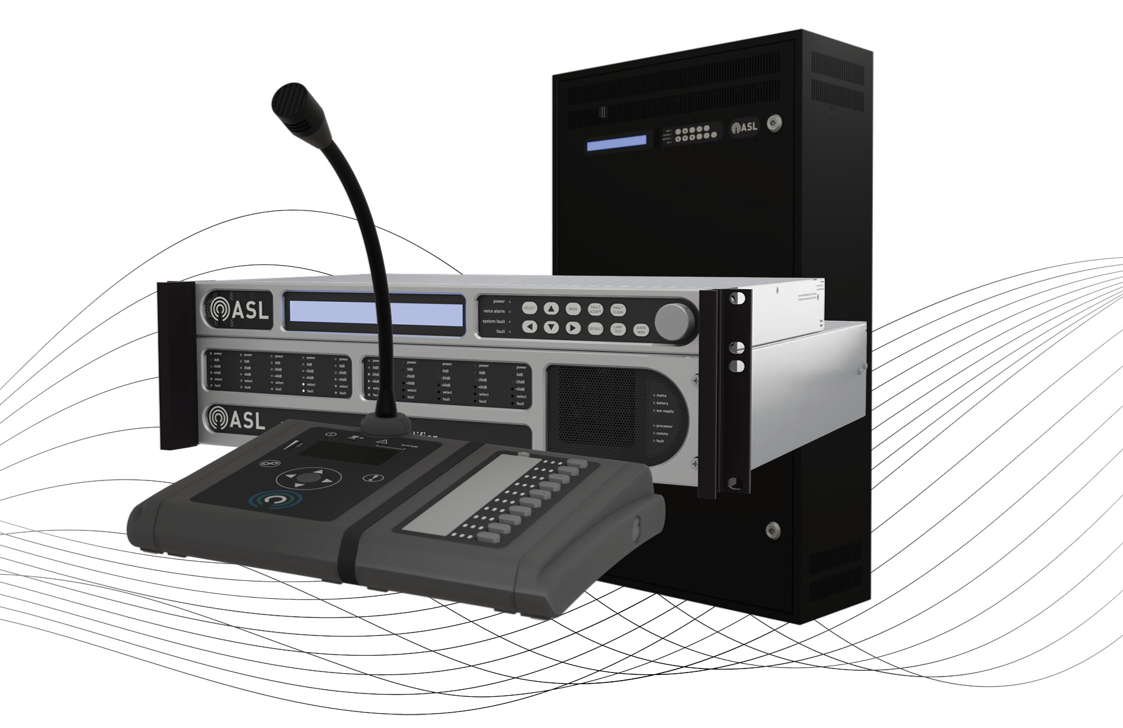 Voice Alarm (VA) – What is a Voice Alarm System?
Voice Alarm (VA) – What is a Voice Alarm System?
A Voice Alarm system - such as those supplied by PAVA Specialists Zenitel - goes beyond the capabilities of a standard PA system. Built specifically for emergencies, VA systems provide pre-recorded or live evacuation instructions to guide people to safety during incidents such as fires, chemical spills, or security threats.
Unlike simple alarm tones or sirens, voice messages are proven to be far more effective at preventing panic and ensuring safe evacuation. Research shows that people respond more quickly and calmly when given clear spoken instructions, such as: “Please leave by the nearest exit and do not use the lifts.”
VA systems (sometimes also referred to as ‘Voice Evacuation Systems’) are often integrated with fire detection and life safety systems, automatically triggering announcements when an incident is detected. They must comply with stringent standards like BS 5839-8 and use EN 54-certified equipment, ensuring the highest levels of reliability and intelligibility - even in noisy or complex environments.
Why compliance and certification matter
Failures in communication during emergencies have tragically led to loss of life, reputational damage and legal consequences. That’s why compliance is non-negotiable.
System designers and consultants are now prioritising solutions that:
- Meet BS EN 50849 and BS 5839-8 standards.
- Incorporate EN 54-certified equipment.
- Reduce the risk of system failure during emergencies.
- Combine daily messaging with emergency functionality.
By meeting these requirements, facilities can protect both people and assets - while ensuring peace of mind for system owners and operators.
Emerging Trends: From harmonisation to unification
PA + VA Harmonisation
With EN 54-16 setting the global benchmark for voice alarm design, more facilities are moving towards hybrid PAVA platforms. These dual-purpose systems allow operators
to run daily announcements and deliver compliant evacuation messaging from a single system - improving resilience while reducing long-term maintenance costs.
Full Unification
Beyond PA/VA harmonisation, the next step is full unification of all communication technologies. By connecting intercoms, radios, PA and VA systems into one integrated platform, organisations can:
- Improve situational awareness in real time
- Speed up decision-making during emergencies
- Eliminate ‘siloed’ systems that don’t talk to each other
- Streamline upgrades, monitoring, and maintenance
Imagine a security officer using a radio to trigger an evacuation message, or a surgeon calling a code-blue alert via the intercom - all within the same system. This is the future of truly unified communication.
Looking Ahead: The Future of Critical Communication
As demands on modern infrastructure grow, unified communication systems will become the standard for compliance, efficiency, and resilience.
By consolidating PA, VA, intercom and radio into a single intelligent platform, organisations can:
- Enhance safety and security
- Reduce operational complexity
- Improve cost efficiency
- Guarantee compliance with tightening regulations.
For system owners, consultants, and integrators, the message is clear: unified communication is not just about technology - it’s about protecting lives, ensuring compliance and building future-ready infrastructure.
Read more about Public Address and Voice Alarm (PAVA) Systems ·
- Voice Alarm vs Public Address Systems: Why the Inter-M EVA Series Redefines Safety, Compliance & Control
- Fundamentals of Public Address and Background Music Systems
- How to design an audio system · Audio System Design Guide - with Chuck Espinoza, AVIXA
- How to create a School Lockdown Procedure
|
|
Featured Products
